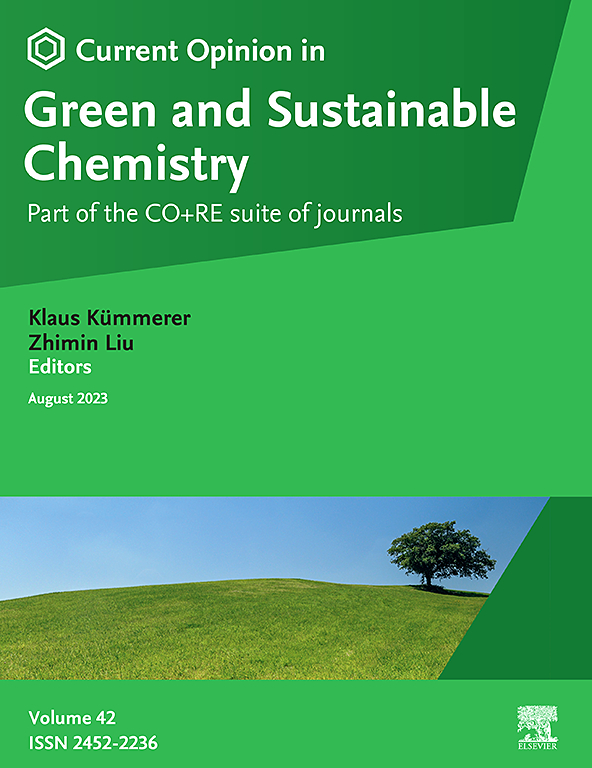The active facet of copper and its alloy for selective and efficient electrochemical reduction of nitrate to ammonia
IF 9.4
2区 化学
Q1 CHEMISTRY, MULTIDISCIPLINARY
Current Opinion in Green and Sustainable Chemistry
Pub Date : 2025-02-01
DOI:10.1016/j.cogsc.2024.100995
引用次数: 0
Abstract
Electrochemical reduction of nitrate (NO3−) to ammonia (NH3) (the e-NO3RR) is one of the most widely discussed methods to remediate the NO3− concentrations found in industrial and agricultural wastewater. The growing importance of NH3 stems from its central role in fertilizer and advanced chemical production and as an emerging renewable hydrogen carrier due to its excellent hydrogen ratio and liquefiability.
This review highlights how the active facets of copper (Cu), the most widely documented electrocatalyst for e-NO3RR, and its alloys transform NO3− to NH3. The literature findings on Faradaic efficiency and the NH3 formation rate in connection with the Cu facet, Cu oxide, and Cu alloys are discussed, followed by a discussion of the potential opportunities of the e-NO3RR. We hope this review will provide helpful information to facilitate the design of the next generation of electrocatalysts.
铜及其合金选择性高效电化学还原硝态氮的活性面
电化学还原硝态氮(NO3−)为氨(NH3) (e-NO3RR)是修复工农业废水中NO3−浓度的最广泛讨论的方法之一。NH3在化肥和先进化工生产中的核心作用,以及由于其优异的氢比和可液化性而成为新兴的可再生氢载体,因此其重要性日益增加。这篇综述强调了铜(Cu)的活性方面,最广泛记录的e-NO3RR电催化剂,及其合金将NO3−转化为NH3。讨论了与Cu面、Cu氧化物和Cu合金有关的Faradaic效率和NH3生成速率的文献发现,然后讨论了e-NO3RR的潜在机会。希望本文的综述能为下一代电催化剂的设计提供有益的信息。
本文章由计算机程序翻译,如有差异,请以英文原文为准。
求助全文
约1分钟内获得全文
求助全文
来源期刊

Current Opinion in Green and Sustainable Chemistry
Chemical Engineering-Catalysis
CiteScore
16.00
自引率
2.20%
发文量
140
审稿时长
103 days
期刊介绍:
The Current Opinion journals address the challenge specialists face in keeping up with the expanding information in their fields. In Current Opinion in Green and Sustainable Chemistry, experts present views on recent advances in a clear and readable form. The journal also provides evaluations of the most noteworthy papers, annotated by experts, from the extensive pool of original publications in Green and Sustainable Chemistry.
 求助内容:
求助内容: 应助结果提醒方式:
应助结果提醒方式:


